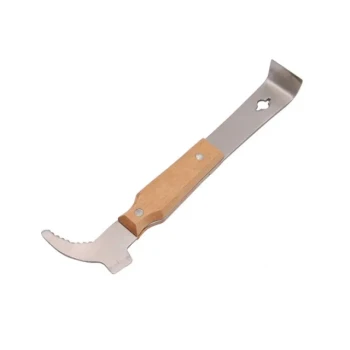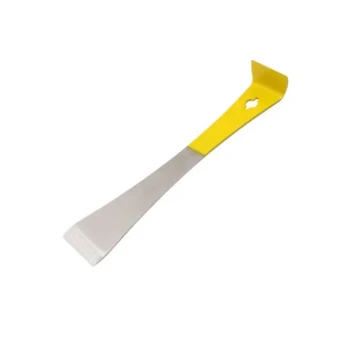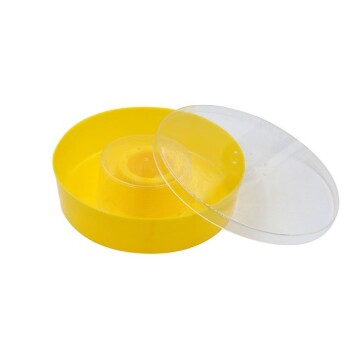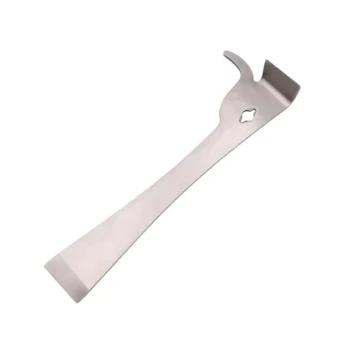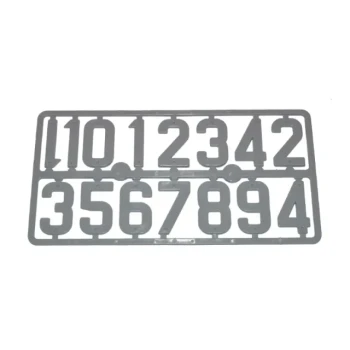Under optimal conditions, a top bar hive can produce a respectable amount of honey, but its yield is inherently different from other hive designs. You can expect a harvest of approximately 3 to 5 gallons of honey per year from a mature, healthy top bar hive. This is a lower quantity than the 5 to 10 gallons possible from a standard Langstroth hive, a difference directly rooted in how comb is managed during harvest.
A top bar hive's lower honey yield is not a design flaw but a fundamental trade-off. By requiring bees to rebuild comb each year, it exchanges maximum honey production for a simpler, less equipment-intensive harvesting process and a valuable secondary yield of pure beeswax.
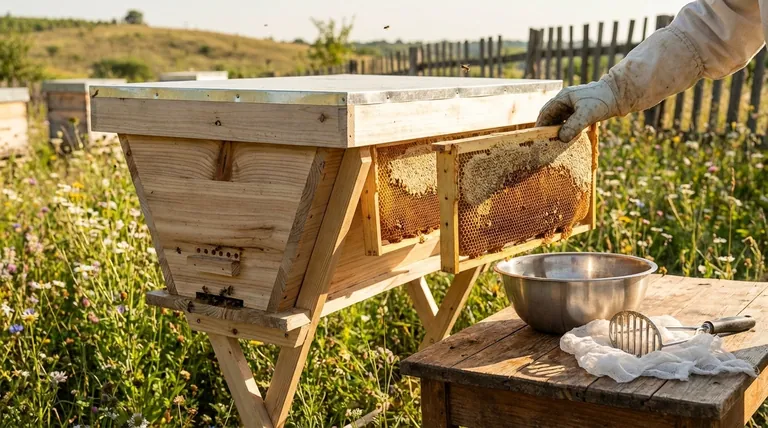
The Core Principle: Why Comb Management Dictates Yield
The honey output of any hive is directly tied to the energy your bees must expend. The key difference between a top bar hive and a frame-based hive like a Langstroth is the fate of the honeycomb itself.
The Top Bar Hive Method: Crush and Strain
In a top bar hive, harvesting honey involves cutting the entire wax comb from the top bar.
Because the comb is not supported by a rigid frame, it cannot be put through a mechanical extractor. The only way to release the honey is to crush the comb and strain it, separating the liquid honey from the solid beeswax.
This means the bees must start from scratch and rebuild new comb in that space the following season.
The Energy Cost of Building Comb
Producing beeswax is one of the most energy-intensive tasks for a honey bee. They must consume large quantities of nectar or honey to fuel their wax glands.
When you remove the entire comb from a top bar hive, you are also removing the bees' complex and energy-expensive architecture. A significant portion of the next season's resources will be redirected from storing surplus honey to rebuilding this essential infrastructure.
The Langstroth Hive Contrast: Extraction and Reuse
In a Langstroth hive, each comb is built inside a rigid, four-sided frame. During harvest, you slice off the wax cappings, but the core structure of the comb remains intact.
This allows the frame to be placed in a centrifugal extractor, which spins the honey out without destroying the comb. The "empty" but fully built-out comb is then returned to the hive.
The bees only need to refill the existing cells, saving an immense amount of energy that can then be devoted to foraging and producing more surplus honey. This is the primary reason for its higher potential yield.
Understanding the Trade-offs of a Top Bar Hive
Choosing a top bar hive is about embracing a different philosophy of beekeeping, one with distinct advantages and disadvantages.
Advantage: Simplicity and Lower Cost
The greatest strength of the top bar hive is its simplicity. The "crush and strain" harvest requires no special equipment.
You can process your entire honey harvest using common kitchen tools like a knife, a large bowl, a potato masher, and cheesecloth. This eliminates the need to purchase or store a costly and bulky honey extractor.
Advantage: A Significant Beeswax Harvest
Because you are removing the entire comb, a top bar hive yields a significant quantity of high-quality beeswax.
This is not just a minor byproduct; it's a valuable secondary harvest. This pure, clean wax can be used for crafting candles, balms, wood polish, and other products.
Disadvantage: Reduced Honey Yield
The primary drawback is the direct consequence of the energy cost of rebuilding comb.
The colony's resources are perpetually divided between drawing new comb and storing honey. This "comb deficit" is the direct cause of the lower annual honey yield compared to a hive with reusable frames.
Disadvantage: Slower Spring Buildup
A colony in a top bar hive may experience a slower buildup of population and resources in the spring.
While a Langstroth colony can immediately begin filling previously built-out comb, a top bar hive colony must first invest time and energy in constructing new wax comb before significant nectar storage can begin.
Making the Right Choice for Your Goals
The decision to use a top bar hive should be based on your personal beekeeping objectives, not just a single number.
- If your primary focus is maximizing your honey harvest: The top bar hive is not the most efficient system due to its annual comb replacement cycle.
- If your primary focus is a low-cost, low-equipment approach that aligns with natural comb cycling: The top bar hive is an excellent choice, offering a respectable honey yield and a valuable bonus wax harvest.
Ultimately, understanding this fundamental trade-off between honey yield and operational simplicity empowers you to select the hive that best aligns with your beekeeping philosophy.
Summary Table:
| Key Factor | Top Bar Hive | Langstroth Hive |
|---|---|---|
| Annual Honey Yield | 3 - 5 gallons | 5 - 10 gallons |
| Harvest Method | Crush & Strain | Extraction & Reuse |
| Comb Management | Comb is removed annually | Comb is reused year after year |
| Primary Advantage | Simplicity, low equipment cost | Maximizes honey production |
| Secondary Yield | Significant pure beeswax harvest | Minimal wax (cappings only) |
Ready to Choose the Right Hive for Your Apiary?
Whether you manage a commercial operation or distribute beekeeping supplies, selecting the correct equipment is critical for success. HONESTBEE supplies durable, high-quality top bar hives, Langstroth hives, and all the essential beekeeping supplies to support your goals.
We help you maximize your harvest and operational efficiency. Let's discuss your specific needs.
Contact our wholesale experts today to get the right equipment for your beekeeping business.
Visual Guide
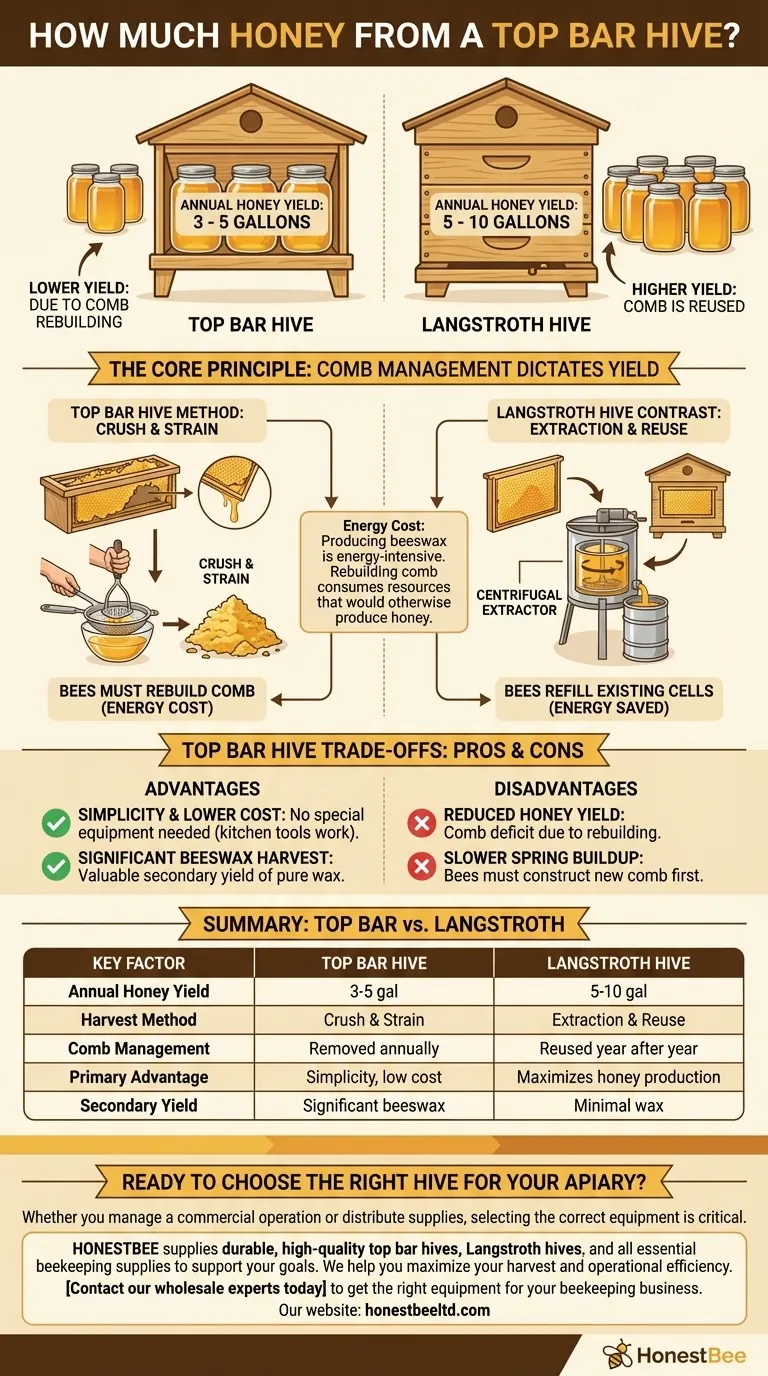
Related Products
- Top Bar Beehive for Beekeeping Wholesales Kenya Top Bar Hive
- Long Langstroth Style Horizontal Top Bar Hive for Wholesale
- HONESTBEE Professional Long Handled Hive Tool with Precision Cutting Blade
- HONESTBEE Professional Multi-Functional Hive Tool with Ergonomic Wood Handle
- HONESTBEE Advanced Ergonomic Stainless Steel Hive Tool for Beekeeping
People Also Ask
- What are the advantages of harvesting honey from a top bar hive? Low-Cost, Simple Harvesting for Beekeepers
- What are the benefits of a top bar hive? A Natural, Low-Impact Approach to Beekeeping
- Why are hive inspections easier with Top Bar Hives? Achieve a Calmer, Safer Approach to Beekeeping
- How should a beekeeper prepare a top-bar hive for overwintering? A Guide to Ensure Colony Survival
- Which is better Kenya top bar hive or Langstroth? Choose the Right Hive for Your Goals



